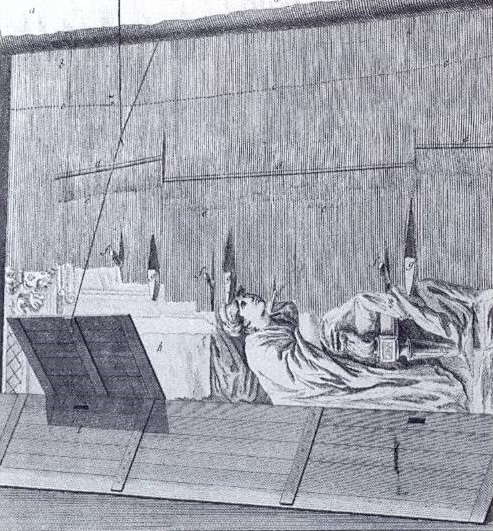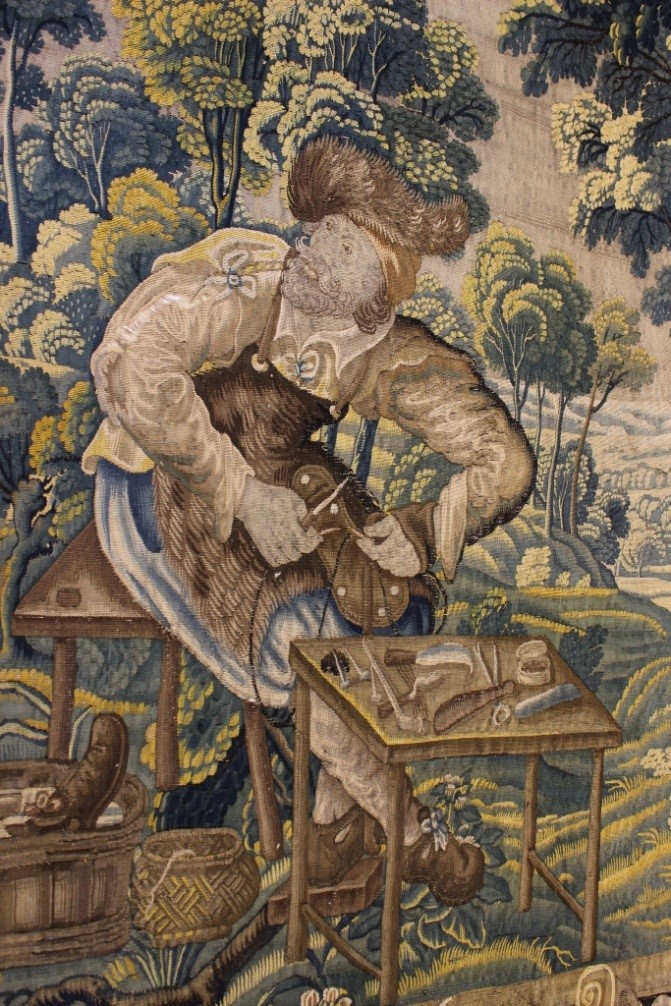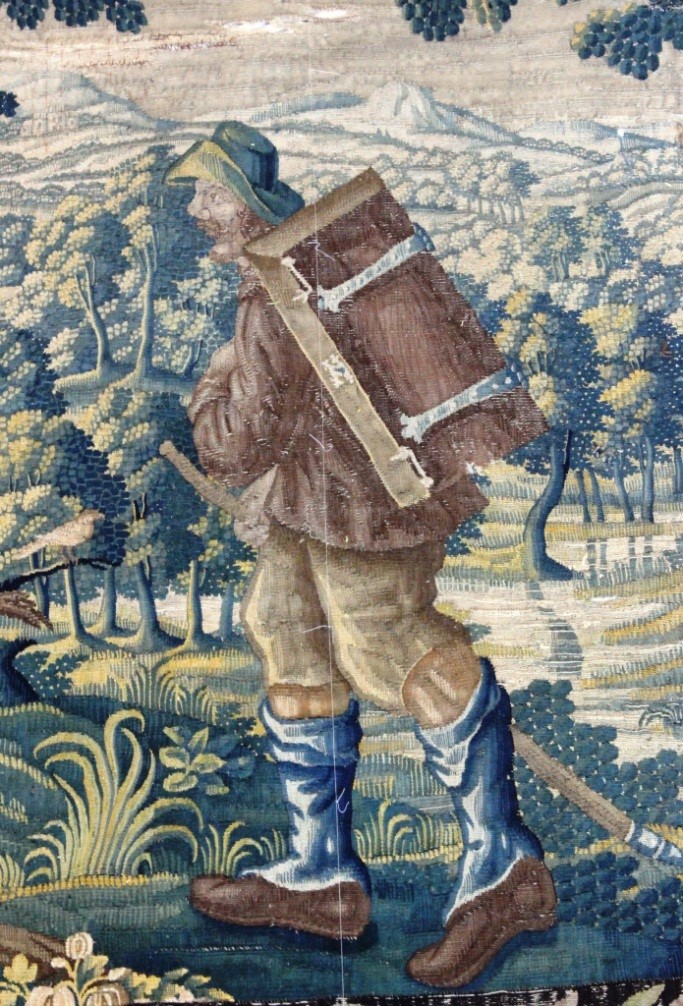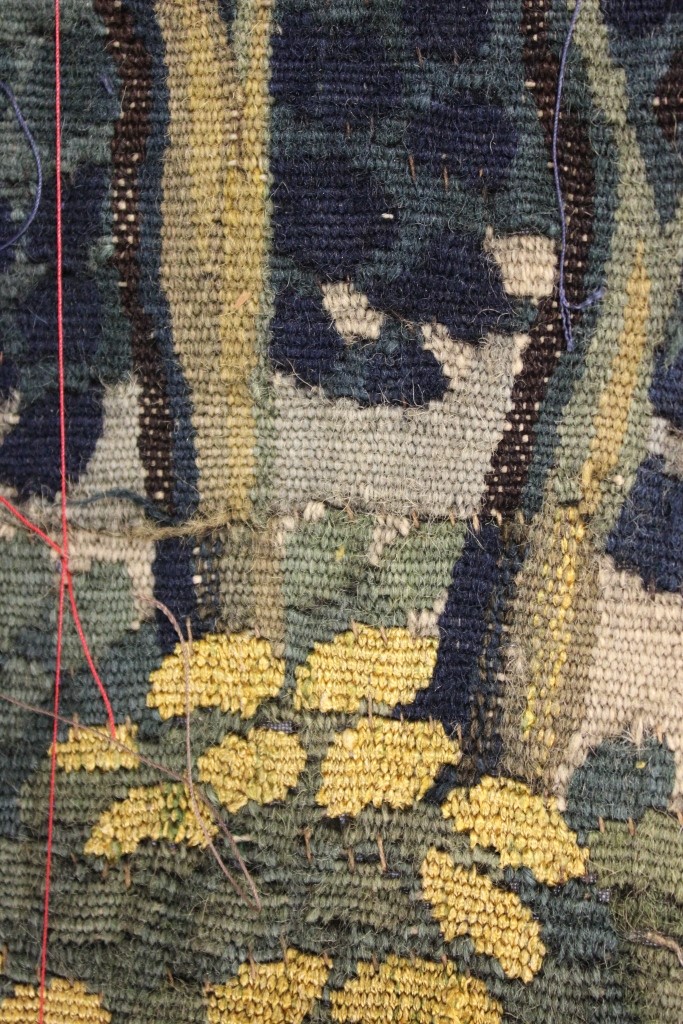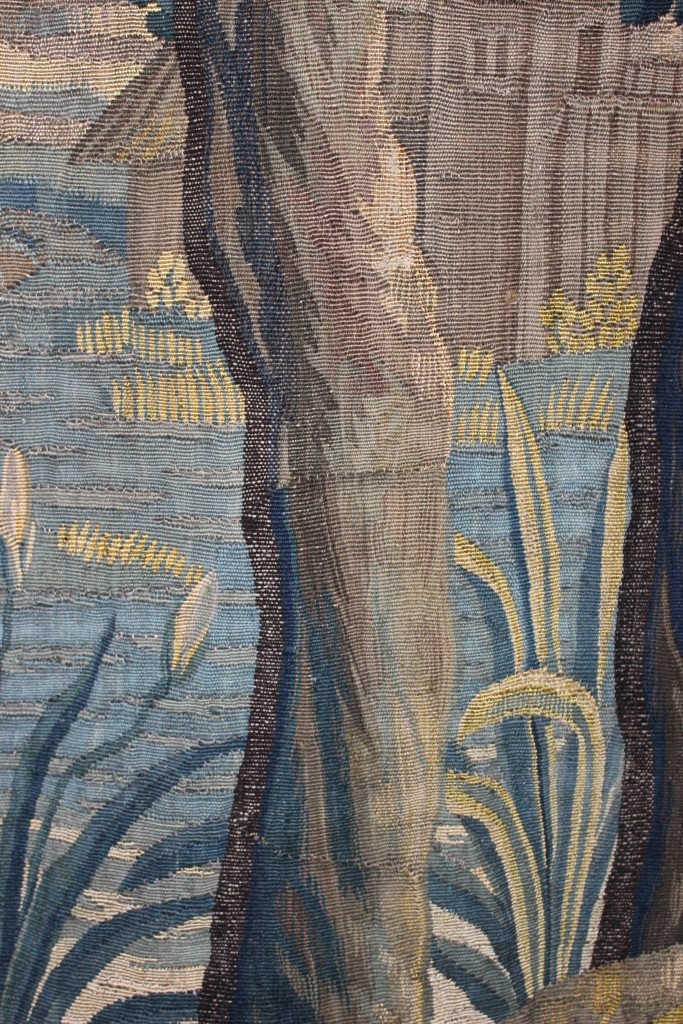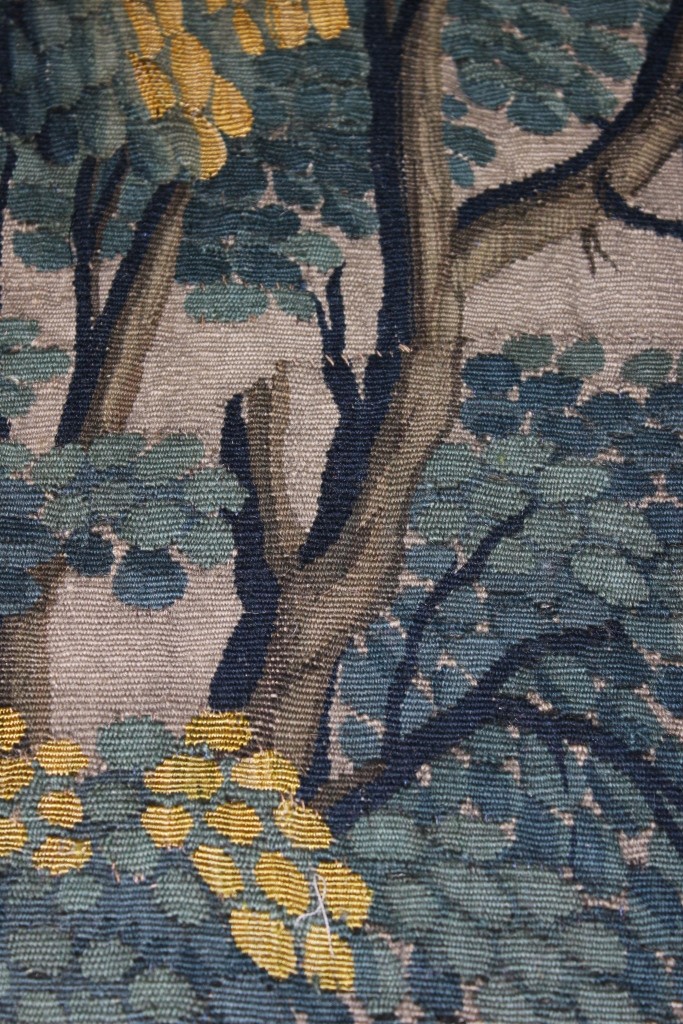As we have been working to conserve the set of six tapestries from the Holly bedroom, we have begun to notice differences in the weaving techniques across our working sections and between the tapestries themselves and we have begun to feel we are getting to know the weavers!
Tapestries were woven on looms by several weavers sitting next to each other working on different sections of the image.
Here is an image of what a tapestry loom might have looked like. You can see that the tapestry is being woven from the back and with the image on its side (just to make it extra complicated!). Weaving the tapestry on its side made creating shading easier particularly with vertical shapes and figures. The weavers used mirrors positioned at the front of the tapestry to see what they were creating. You can see the weavers here peeking through the warps at the back to look in the mirror.
Image 1. An image of high warp tapestry weaving at the Gobelins (a tapestry manufacturer based in Paris France, founded in the 17th Century).
Engraved plate from Denis Diderot’s Encyclopédie / “Interior: Gobelins Factory” / 1751-72
To become a weaver required the undertaking of a seven year apprenticeship, it was very skilled work. Contrary to popular belief weavers would have all been men. The only roles women were allowed to carry out were the spinning of the wool and silk yarns and stitching up of the slits within the tapestry once the weaving was complete.
Apprentices would probably have begun weaving less complicated areas of the tapestry such as parts of the sky, perhaps progressing to foliage and flowers. There would have been a master weaver who would have worked on the more complicated areas such as the figures.
Of all the figures in the set of six tapestries from the Holly bedroom the Cobbler is our favourite, he appears the most accomplished. The details in his face and beard, the fur in his hat and apron and the tools on his table make him particularly lovely in our opinion. Another figure in the set, the Peddler is much simpler in design when compared with the Cobbler suggesting that he was perhaps woven by a less experienced weaver.
Image 2. The Cobbler
Image 3. The Peddler
In fact the entire Peddler tapestry seems to have been woven either in a hurry, (perhaps it was the last in the set to be woven) or it was woven by less experienced weavers, as tensions in the weave are much less consistent. This gives the tapestry a more lumpy texture when seen close up and has perhaps contributed to the tapestry being in a poorer condition than the others in the set. The uneven tensions may have caused more of the warps and weft to break and deteriorate faster in places. This tapestry has also had more light exposure than some of the others as it hangs directly opposite the window and also hangs across the main door to the room.
As well as noticing differences between the tapestries we have also noticed different weaving techniques within the individual tapestries. This is particularly noticeable within the foliage of the trees; For example one weaver might have woven his particular area of leaves using lots of short woven slits or have interlocked the weft instead of creating a slit, where another might have used lots of long woven slits between the leaves.
We have also come across areas where they have used slightly different combinations of the wool and silk yarns used to weave the tapestry. These images of tree trunks in the bagpiper tapestry have woven slits cutting across them. Either side of these slits you can see that slightly different colours of wool and silk and different weaving techniques have been used to create the shapes and shading in the weave. Perhaps this is where two weavers sat next to each other and their weaving met.
Image 4 and 5. Look at the different coloured wools used either side of the slits in these tree trunks and the different shapes the weavers have used to create the shading.
(Remember the tapestry was woven on its side so these trunks would have been horizontal as they were woven).
Image 6. We also wondered if the broken branch in this image was a mistake, perhaps one weaver began the branch from below but his neighbouring weaver didn’t start weaving the branch from above to meet it.
We have also found hairs woven (accidentally) into the tapestry, a strip running right across the Bagpiper tapestry was full of red hair caught within the weave of the tapestry, this weaver must have liked to wear his hair down while he worked!
For images and weekly updates on the conservation project, follow us on Instagram at conservation_at_doddington.

